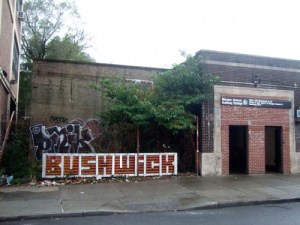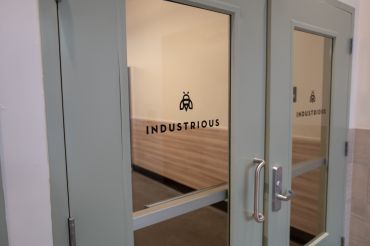Once Creative Hubs, Bushwick and Williamsburg Targeted for Bank Invasion
By Billy Gray October 14, 2013 1:55 pm
reprintsIt’s not every day that Staten Island is compared to Thailand.
But the similarities were drawn between the two recently by a panel of community bank bosses discussing the untapped real estate potential of far-flung New York locations for their smaller and, per popular perception, friendlier depository institutions, commercial and multifamily lenders.
In the minds of the speakers, certain outer-borough neighborhoods—many of them, like Williamsburg, Long Island City and Bushwick once considered enclaves for creative professionals—are the city equivalent of emerging markets like the BRIC nations and the Land of Smiles.
 “Bushwick and Long Island City are our emerging markets, our Brazil and China,” said Richard Maher, a vice president at Maspeth Federal Savings. He was joined on the dais last Tuesday by Daniel Berke (chief lending officer, NorthEast Community Bank), Mac Wilcox (president of Savoy Bank) and Richard Grani (first vice president of East West Bank) at the Hilton Midtown for the NYC Real Expo 2013.
“Bushwick and Long Island City are our emerging markets, our Brazil and China,” said Richard Maher, a vice president at Maspeth Federal Savings. He was joined on the dais last Tuesday by Daniel Berke (chief lending officer, NorthEast Community Bank), Mac Wilcox (president of Savoy Bank) and Richard Grani (first vice president of East West Bank) at the Hilton Midtown for the NYC Real Expo 2013.
Their presentation followed one by John Buran, the president and chief executive of Flushing Financial Corporation, who stressed a community bank’s unwavering “devotion to local residents and businesses [the banks] have personal relationships with.”
Community banks may not quite have seized on populist anger following the recession, a time when Occupy Wall Street encouraged people to divert their funds from the big guys. But they could take advantage of a surprising dearth of major bank presences in ascendant neighborhoods. Consider that there is just one Bank of America location in all of central Williamsburg’s 11211 ZIP code. The same goes for Long Island City’s 11101 ZIP and Bushwick’s 11237 ZIP code.
And this despite Chase, Citibank and Bank of America nearly monopolizing many major Manhattan intersections over the past decade. Writing about the rise in New York City bank branches shortly before the recession (which many thought would stop the growth), The New York Times said the number of new branches had grown by an annual rate of 6.6 percent over the past several years. Throughout New York state between 2001 and 2011, the number of bank branches increased by 18.8 percent versus 3 percent population growth.
Although it’s not too evident around Manhattan, the recession did have a significant effect on the national bank branch boom. In 2010, the number of bank branches that closed outpaced those that opened for the first time in 15 years, leading to a slight dip to 98,157 branches compared to 99,550 branches the previous year. More recently, a March 2013 article in the Wall Street Journal reported that there were 93,000 bank branches across America at the end of 2012, the lowest total since 2007.
Meanwhile, on the local lending side, four community banks (New York Community Bank, Signature Bank, Flushing Bank and Astoria Federal Savings Bank) were ranked among the five most active lenders in August 2013 by The Mortgage Observer. JP Morgan Chase rounded out the list.
Finally, hammering home the idea that East Williamsburg and Bushwick really could be the next India when it comes to development, the 11206 and 11237 ZIP codes in those neighborhoods were the most active in the city when it came to the number of financing transactions.
All of the top eight ZIP codes were located in Brooklyn.


